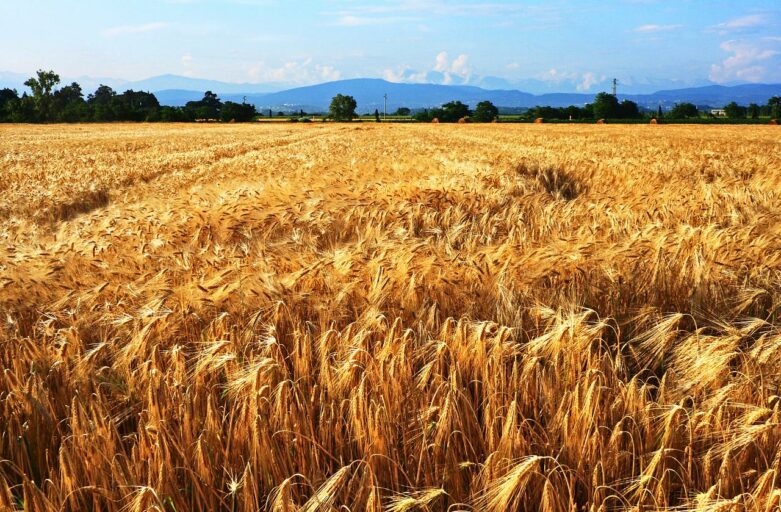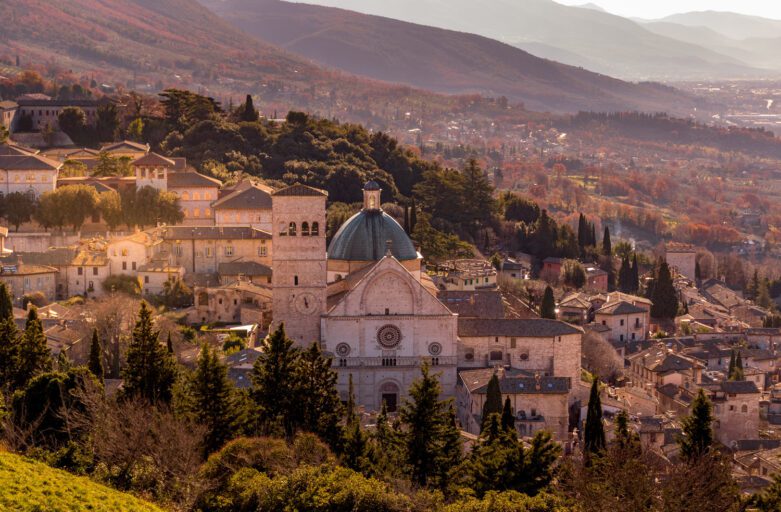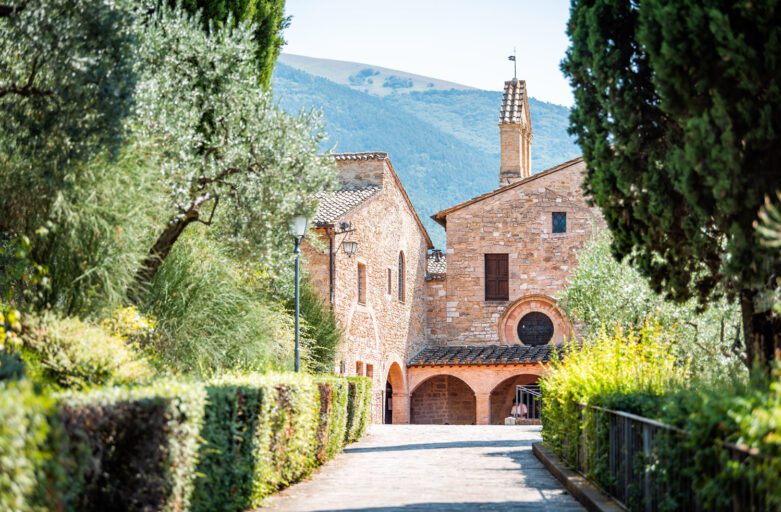Saint Francis of Assisi and the Porziuncola
The expanses below Assisi are among the most fascinating in Italy thanks to their colors and the view they afford on the town, which follows the contours of Mount Subasio in its white and rose stones. Precisely in this plain did blossom the life flowers of Saint Francis and Saint Clare. The young man, after restoring the Church of Saint Damian, “moved to the place called Porziuncola, where an old church existed, dedicated to the Blessed Virgin, Mother of God, now abandoned and forgotten. Seeing it in such a poor state, and also because he had great devotion toward the Mother of all goodness, the Saint made it his own home, and would finish to repair it in the third year after his conversion.” This is how Thomas of Celano, Francis' first biographer, reports the Saint's coming to this “small portion of land” (that is the meaning of Porziuncola) in the plain.
Right around that abandoned little church, possibly built in the fourth century and now given the Saint by the Benedictine monks, the first Franciscan company was founded, a bunch of enthusiastic friends. According to G. K. Chesterton, this became “the home of many homeless men.”
Porziuncola, a Place Full of Events
Here Francis' first followers lived, and from here they left toward the towns of Umbria and the surrounding lands; here Francis got a deeper understanding of his calling, that consisted in staying with the poor and proclaiming Christian salvation. Here, in the night of Palm Sunday, 1211, he cut the hair of Saint Clare (Chiara di Favarone di Offreduccio), who had fled to the Porziuncola to join the Franciscan community. Here, again, the Saint faced his temptations and had his visions. In this beloved place he wished all people might receive God's pardon thanks to the “indulgence,” a request of his that Pope Honorius III would grant as a spiritual gift to all visitors. Here, finally, Francis asked to be carried when he was about to die, in a hut next to the chapel now called “the place of Transit” (from earth to God), that worked as an infirmary. He passed away on October 3, 1226, in the same place where it all began. From then on, nobody would stop the life stream that gushed that day.
A place is needed for events to happen: to Francis, this was – more than many others – a harbor whence to start and where to come back.
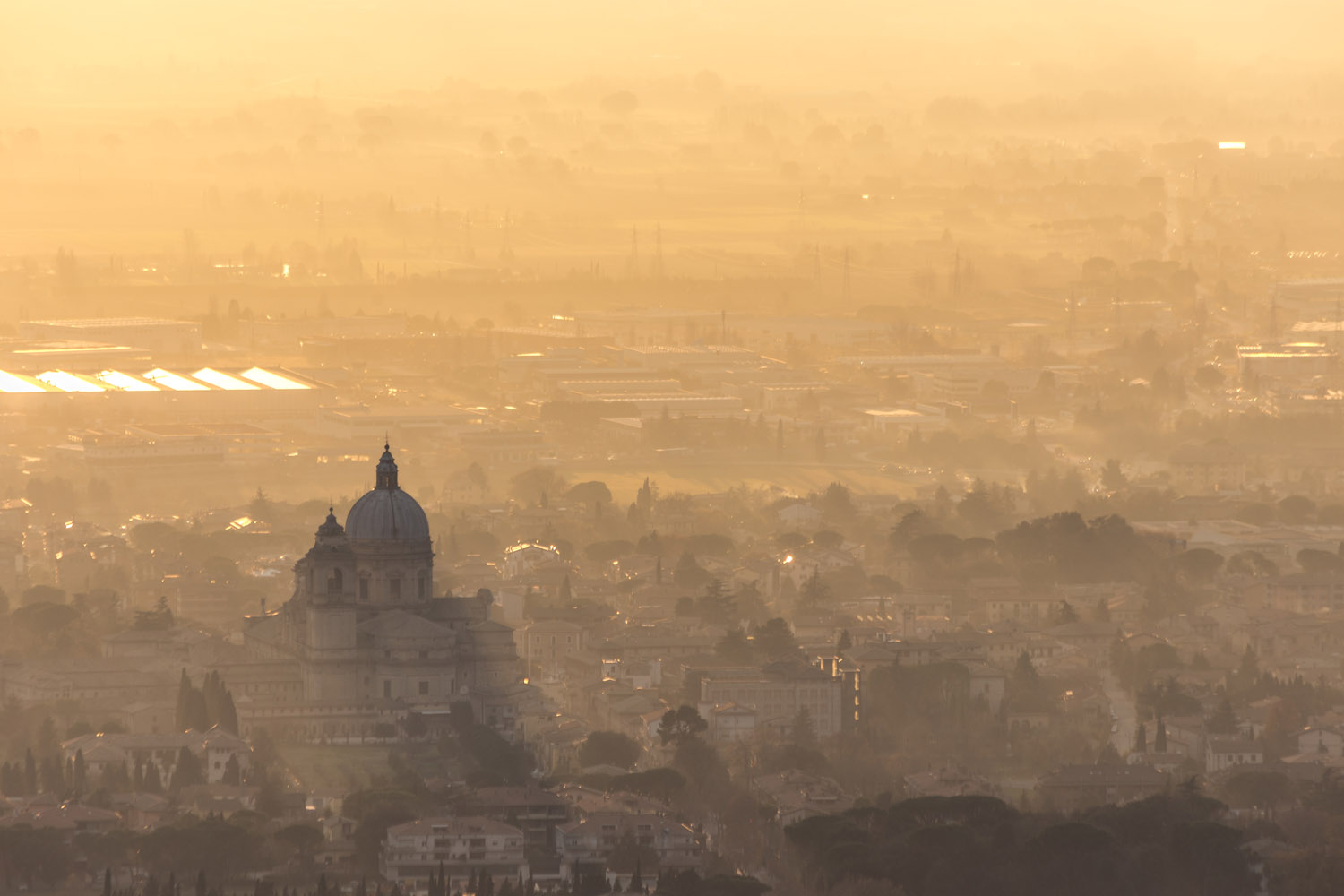
The Porziuncola and Its Chest: Saint Mary of the Angels
Porziuncola
The Porziuncola, still nowadays a shrine and mother house of the Franciscan religious Order, is a small square building. It mirrors the Romanesque structure of Umbrian pievi (parish churches in the countryside), made with local stones roughly hewed. Above its saddle roof, a small belfry – added in a later epoch – prolongs the vertex of the façade almost wholly painted by Friedrich Overbeck in 1830. Through a 15th century wood door you will reach a small nave where, behind the altar, a polyptych of the late 14th century can be admired. In the back façade, a fragment of a Crucifixion by Perugino: some women support Virgin Mary, who collapses under the pain of her Son's death. In the background the legs of a crucified man are still visible; on the right, Saint Francis kneeling by the Cross.
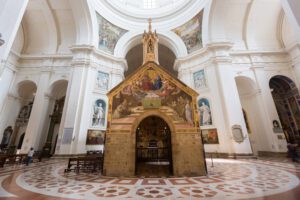
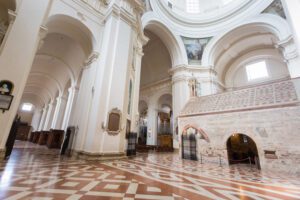
The Altar-piece of the “Pardon of Assisi”
The altar-piece, in a sequence of episodes, tells the story of the Pardon of Assisi.
The cycle begins with a picture of Saint Francis who, in the climax of temptation, throws himself into a bramble bush; he is then led by two angels to the Porziuncola, where he has a vision of Virgin Mary and Jesus. “Francis, what is your wish?” – they asked. He answered, “Oh, Our Father most holy, I, however miserable and a sinner, pray that You may grant entire pardon, whole forgiveness of all sins to those who, after repenting and going to confession, will come and visit this church.” In the other scenes, Francis asks the Pope for confirmation of such a spiritual privilege, that until then was only granted the pilgrims who went to the Holy Land or to Santiago de Compostela. He then shares with all people the gift he received for the benefit of all those who will visit the Porziuncola. Standing out in the central part of the polyptych is the Annunciation of the Angel to Mary, a symbol of humbleness and poverty in spirit.
So, the Porziuncola passed from being a “small portion of land” to being the gate to heaven.
Those who cross its doorstep will be given a new chance because – as the inscription on the door reads – Hic locus sanctus est, “This is a holy place.”
Saint Mary of the Angels
Starting from 1569 (until 1679), in order to shield the Porziuncola, Pope Pius V decided to have the Basilica of Saint Mary of the Angels built; the architect was Galeazzo Alessi.
Its interior, majestic if essential, stresses the importance of the Porziuncola above everything else in the place. In the presbytery (the area for the clergy during the Mass) you can visit the Chapel of the Transit, that is, the old infirmary cell where Saint Francis passed away; it is embellished by the frescoes of Giovanni di Pietro “Lo Spagna,” and a glazed terracotta by Andrea Della Robbia.
The basilica also includes a rose garden, a small plot of land belonging to the old forest where the friars used to live. Here, according to one tradition, when the brambles were touched by Saint Francis' body, they withdrew their thorns. As a matter of fact, here it is still possible to see the Rosa canina Assisensis, a type of rose without thorns.
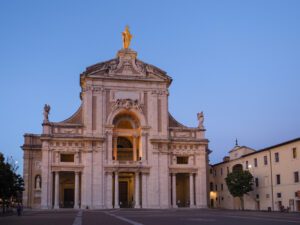
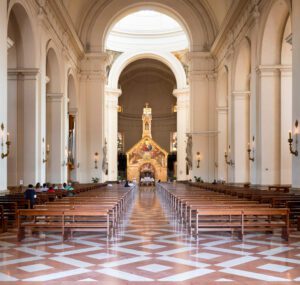
Saint Francis, the Little Poor Man of Assisi
In 1206, a young man had stripped bare in the main town square. According to one of the legends, he then replaced his garments with a beggar's. According to a different version, he started to wear the rough, brown tunic of a farmer, who had given him the oldest he owned. “Then years later, that make-shift costume was the uniform of five thousand men; and a hundred years later, in that, for a pontifical panoply, they lay the great Dante in the grave” (G. K. Chesterton).
We can still nowadays meet men and women who have been transformed by the Saint, and by this, enjoy his positive effects ourselves.
INFORMAZIONI
Località
Piazza Porziuncola, 1, 06081 Santa Maria degli Angeli PG
Orari
Tutti i giorni:
06:15 - 12:30
14:30 - 19:30
Contatti
Email: info@genesiagency.it
